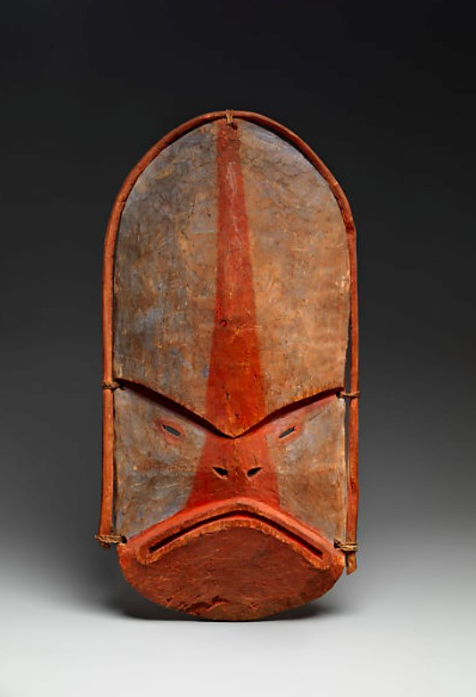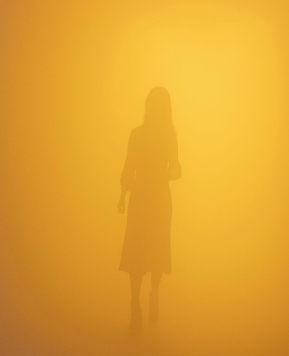A Study Of Sandro Botticelli’s Venus And Mars
By Tyler Jerrom. Art History 107: The Renaissance, Art and the City. Grade: A 87/100
This essay will look at Venus and Mars by Sandro Botticelli, and its relationship to the contemporary context in which it was created. I will aim to describe the reasons behind the sexual nature of this image, which depicts Venus and Mars after having made love, as well as the contextual elements which allowed for sexual imagery and narrative in a period in which sexual acts were typically frowned upon. I will also look at the influence of the patrons on this work in the stylistic nature of the work, as well as the subject matter included. In order to achieve this, I shall draw a comparison from other works by Botticelli such as Primavera and Idealized Portrait of a Lady, as well as contemporary art pieces from other artists, such as The Creation of Adam by Michelangelo Buonarotti.
This work shows Venus in an elegant and dainty recline looking over the slumbering, almost nude figure of Mars who is covered with just a white cloth, while four satyrs comically occupy the surrounding shallow visual illusion of space (see figure 1). It is commonly accepted that this is an image depicting the moment after the pair have made love and is supported by a number of metaphors and gestures. In contrast to the alert gaze which Venus holds, Mars is in an almost comedic, slumberous state, unable to be woken even by the blowing of a conch into his ear, with his mouth ajar in such a way that his snoring is almost audible. Combined with his limp wrists and a flaccid finger (see figure 2) placed suggestively on his left thigh it can be inferred that he is a man in a state of exhaustion post-intimacy.
This act could also be referenced by the metaphorical depiction of this act by the three satyrs above Venus and Mars. The lance of Mars which they hold could be viewed as a phallic symbol, hence the charging of Mars’s lance towards a hole within the tree which is surrounded by myrtle, a symbol of Venus (see figure 3), located in the upper right of the image completes the visual metaphor. Along with the sexual implication of the image, the contrasting depictions of Venus, the Goddess of Love, being alert and awake while Mars, the God of War, appears to have been subdued, can be seen to have a message of ‘love overcoming war’, or the ‘Harmony of opposing forces’ if looked at through a Neoplatonic view.[1]
Despite the largely accepted sexual nature of this piece, there is the argument that this scene does not depict a moment of post-intimacy, but instead shows a dreaming Mars.[2] This idea was originally formed due to the missing depiction of Cupid, who is Venus’s escort, and is instead replaced by four little satyrs. One idea is that Mars is dreaming of a war in which he was victorious, with this being reflected by the satyrs who adorn themselves in Mars’s armour and helmet and play with his lance, whilst the blowing of the conch can be seen as a distant memory of a war horn. Another idea is that the sexual symbolism of the lance projecting at the tree hole, which is carried out by satyrs, is instead a reflection of a man’s sexual frustration which is being relieved in the form of sexualised dreams.
This work is commonly thought to be from a piece of furniture such as a castone or spalliera. However, as there is a large proportion of subject matter, such as three of the satyrs and the faces of the figures of Venus and Mars, located towards the top of the image, it is thought to have been a spalliera and would have been viewed from shoulder or head height. This is in contrast to a castone which would have been looked down upon (hence most of the subject matter would have been located within the bottom section of the work). The proportions of this work are also more consistent with spalliera works rather than castone.[3] Spalliera were usually presented as a part of a wedding celebration, and could have been a part of wall panels or headboards within the chambers of the recipients.
Art within this environment usually functioned as a motivation or reminder of a woman’s expectations within marriage, and the expectations and ideals of women of the time. This can be seen in the depiction of Venus. Despite this being a scene about the sexual interactions of Venus and Mars, Venus appears very poised and proper whilst being clothed (which is uncommon in the portrayal of Venus) in a contemporary dress in the colour symbol of virtuosity and virginity. This depiction of Venus as being both sensual and modest can also be seen in Botticelli’s The Birth of Venus (see figure 4) in which she appears nude, yet retains her modesty by covering herself with her hands and is soon to be clothed by the female figure upon the shore. Hence, the function of this painting would have been to remind the wife of chastity and faith to her husband, yet also the ideal that she should provide an heir to the family.
It was also a common idea in this period that by viewing beautiful things, one would imprint their semen with heavenly beauty which would transfer to their child. Hence the beautiful portrayal of Venus and Mars lends itself into this context. Art in the chambers of a house within the Renaissance, however would not have just been viewed in a contextual relationship with sleeping and coitus but would have also been viewed by guests. Chambers were used by people of this period for activities like entertaining guests, hence the painting would also hold the visual symbolic implications of displaying wealth and riches.
The fact that this was produced for a secular rather than religious context also explains stylistic aspects, as well as aspects of the depiction of the figures. For example, in a religious setting, it would have been considered inappropriate to have a scene with links towards sexual activity, especially in this narrative which is about an extramarital affair. Hence a nude figure of anyone other than the figure of Christ would not have been allowed. Another example is that it is a reference to classical narrative and figure rather than those of religious origin. This also lends itself into the freedom surrounding depictions of classical stories, which in comparison to religious iconography has no prescribed way of being interpreted or depicted[4].
In terms of style, Botticelli shows an artistic stylisation of the scene rather than conforming to naturalistic conventions which were typical of the Renaissance period[5]; a period that Yukio Yashiro describes as ‘deteriorating into Mannerism’.[6] Despite this veering away from the naturalistic approaches which aimed to accurately portray the world in which the artist saw and perceived; Botticelli harmoniously and convincingly portrays the human figure in a fairly accurate manner.[7] However, the focus is aimed upon the stylistic representation of the figures. Another example of an artist who treats figures in the same stylistic approach, rather than approaching them through realism, is The Creation of Adam by Michelangelo (see figure 5), which is increasingly apparent when looking at the male reclining figures in both pieces, as well as details of hands (see figures 2 and 6). Mars can also be seen as being depicted in a similar manner to the large-scale St Sebastian (see figure 7), yet with sharper foreshortening, especially in the face and head. The gracefully drawn figure of Venus shows the great skill Botticelli was accredited with – in painting and beautifying the female form in such a way that is nothing short of visual poetry in its elegant, curved, diagonal flow across the image. Such treatment of female figures can also be viewed in Primavera (see figure 8), in which Botticelli depicts six female figures in delicate and graceful poses. Primavera was also constructed for a chamber context, and also looks at the ideal of a chaste and fertile woman.
An element which is commonly used in the Renaissance period to refer to the patrons of the work is the idea of a visual pun. In the top right hand of the image, surrounding the opening within the tree is a depiction of wasps, or vespe, which sounds like the name of the powerful Florentine family, the Vespucci, and appear within their coat of arms. As suggested by Giovanna Lazzi, Venus and Mars were modelled from Simonetta Vespucci and Giuliano de’ Medici,[8] with art historian J. P. Richer making the statement that this is the only authentic portrait of Simonetta.[9] Although it is not confirmed that this painting was commissioned by the Vespucci, or that the figure of Venus was indeed modelled off Simonetta, the likeness of Venus, in particular the intricate arrangement of her hair appears very similar to other works by Botticelli, such as the Idealized Portrait of a Lady (see figure 9) and Ideal Portrait of a Young Woman (see Figure 10), which have both been identified to be showing the likeness of Simonetta.[10]
In conclusion, the intended location of this piece, and its function as a piece of a spalliera allows us to understand the purpose of the sexual connotations of the work and its intended messages. This was also made possible by the secular location rather than the religious location of the work. The role of the patrons of this work was also made apparent by subject matter such as the vespe, and also in the portrayal of Venus to taken on Simonetta’s likeness.
[1] Cristina Acidini. “For a Prosperous Florence: Botticelli’s Mythological Allegories” in Botticelli: Likeness, Myth, Devotion: an Exhibition Organized by the Städel Museum, Frankfurt am Main, November 13, 2009-February 28, 2010, ed. Andreas Schumacher (Ostfildern, Germany: Hatje/Cantz 2009), 89.
[2] Wilhelm Bode. Sandro Botticelli (London: Methuen & Co. LTD, 1925), 68.
[3] Richard Stemp. The Secret Language of the Renaissance: Decoding the Hidden Symbolism of Italian Art (London: Duncan Baird Publishers, 2006), 92-93.
[4] George Holmes. Renaissance (London, Weindenfeld & Nicholson, 1996), 111.
[5] John Paoletti and Gary Radke, Art in Renaissance Italy, 4th ed. (London: Laurence King, 2011), 280.
[6] Yukio Yashiro . Sandro Botticelli & The Florentine Renaissance (London: Medici Society, 1929), 71.
[7] Holmes. Renaissance, 107.
[8] Hans Körner, “Simonetta Vespucci: The Construction, Deconstruction, and Reconstruction of a Myth” in Botticelli: Likeness, Myth, Devotion: an Exhibition Organized by the Städel Museum, Frankfurt am Main, November 13, 2009-February 28, 2010, ed. Andreas Schumacher (Ostfildern, Germany: Hatje/Cantz 2009) , 62-63.
[9] Yashiro . Sandro Botticelli & The Florentine Renaissance, 181.
[10] Körner, “Simonetta Vespucci: The Construction, Deconstruction, and Reconstruction of a Myth” 67-69.
Bibliography
Acidini, Cristina. “For a Prosperous Florence: Botticelli’s Mythological Allegories” in Botticelli: Likeness, Myth, Devotion: an Exhibition Organized by the Städel Museum, Frankfurt am Main, November 13, 2009-February 28, 2010, edited by Andreas Schumacher, 73-96. Ostfildern, Germany: Hatje/Cantz 2009.
Bode, Wilhelm. Sandro Botticelli. London: Methuen & Co. LTD, 1925.
Holmes, George. Renaissance. London, Weindenfeld & Nicholson, 1996.
Körner, Hans. “Simonetta Vespucci: The Construction, Deconstruction, and Reconstruction of a Myth.” in Botticelli: Likeness, Myth, Devotion: an Exhibition Organized by the Städel Museum, Frankfurt am Main, November 13, 2009-February 28, 2010, edited by Andreas Schumacher, 57-70. Ostfildern, Germany: Hatje/Cantz 2009.
Paoletti, John, and Gary Radke, Art in Renaissance Italy, 4th ed., London: Laurence King, 2011.
Stemp, Richard. The Secret Language of the Renaissance: Decoding the Hidden Symbolism of Italian Art. London: Duncan Baird Publishers, 2006.
Yashiro, Yukio. Sandro Botticelli & The Florentine Renaissance. London: Medici Society, 1929.
About the Author:
Tyler Jerrom is a fourth year BA/BSc conjoint student, majoring in Japanese and Psychology. His love of art history was sparked in High School art history classes and he has been filling papers outside of his major with art history courses.



















